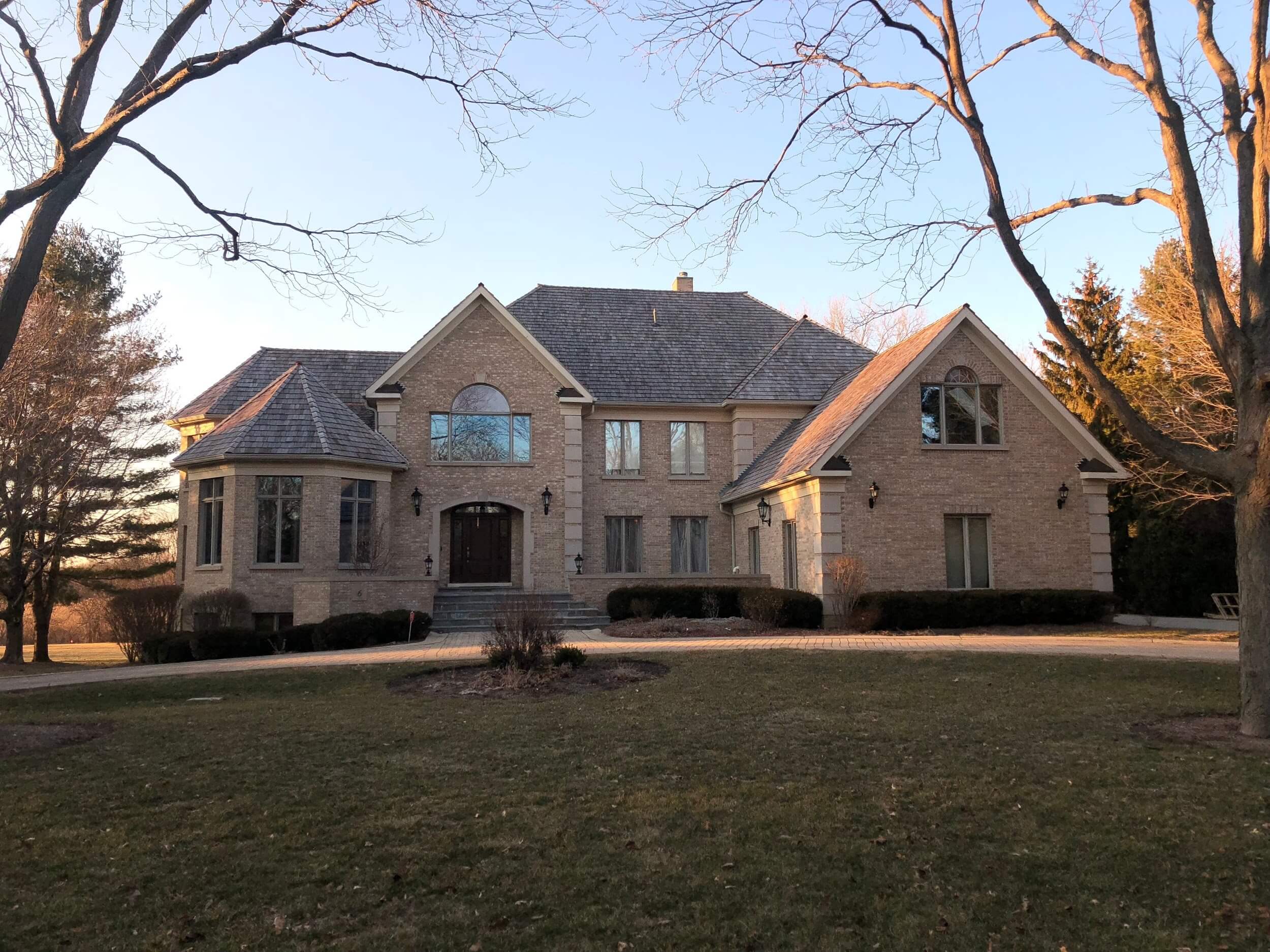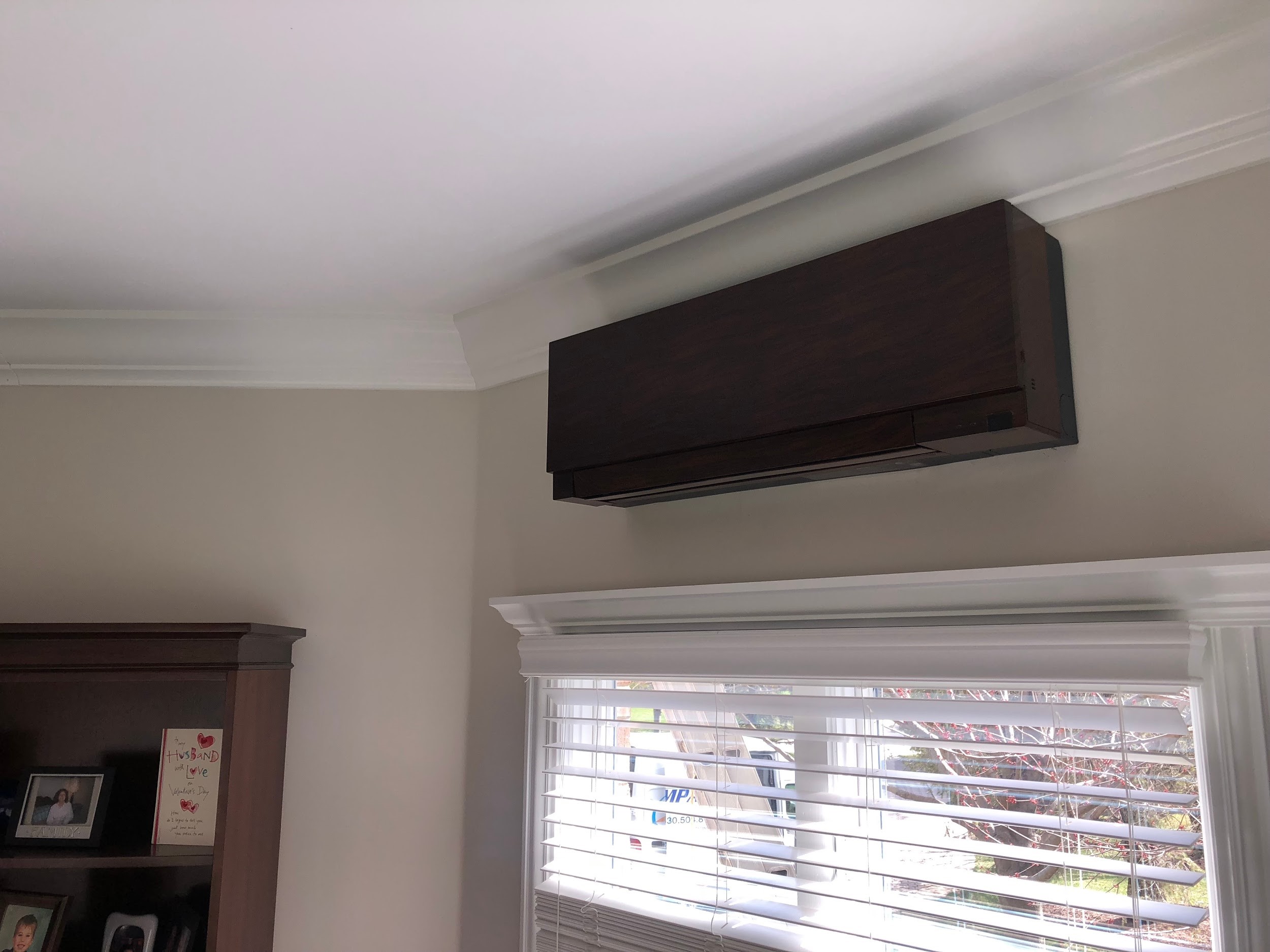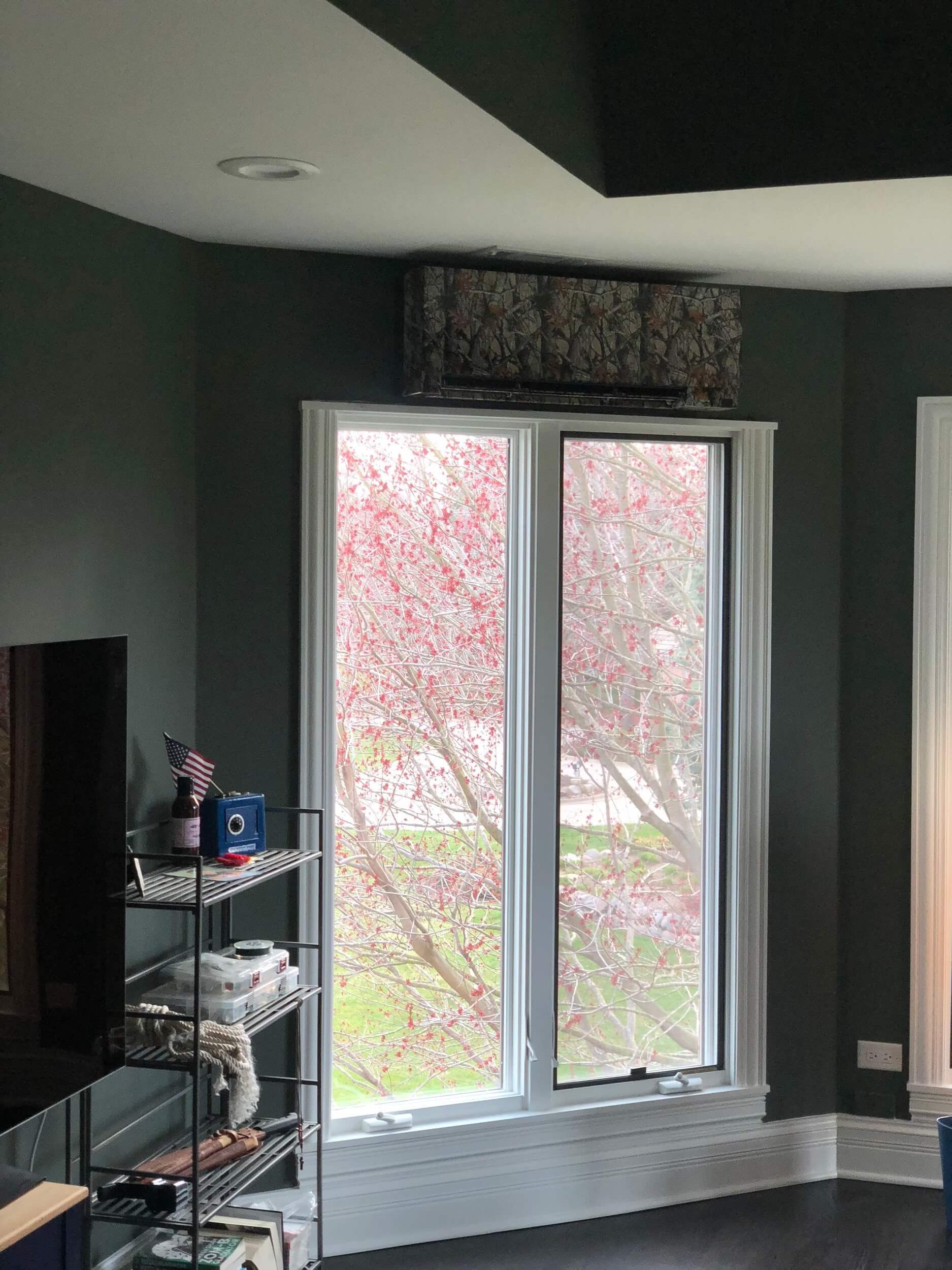ductless-hvac-adds-discrete-heat-and-ac-to-south-barrington-il-home
Like many large homes, proper hvac systems can be a challenge. Factors like large square footage and unique layout play a significant role. Many times, the setups that work in smaller homes can’t merely be expanded to work in a house such as this.
Our homeowner reached out because he finally wanted proper climate control. But, he didn’t want to make a lot of aesthetic changes to the house. He was very happy with how it looked.
We quickly got to work on a system that would provide the heating and cooling he needed without changing the look of his home.
Problem: A large luxury home in South Barrington IL is always too hot in the summer and too cold in the winter. This is due to the size and layout of the home, and the central hvac setup. In particular, the homeowner wanted any new equipment to blend in with the home’s decor.
Solution: Installed a Mitsubishi ductless heat and air conditioning mini-split system. The setup for this home uses an outdoor condenser with three indoor air handlers with customized graphics to make them discrete.

Heating and cooling in a large, luxury home

Like many homes, this South Barrington house has a centralized forced air system. It uses a thermostat on the first floor to regulate the temperature. And, it circulates air using ductwork and vents.
In this case, the problem is the many areas the system needs to serve. With so many areas, some rooms start off hotter or colder than others.
In the winter, a spot that’s colder than the room with the thermostat will never warm up adequately. That’s because the furnace turns off once the thermostat reaches its setting. It doesn’t account for other areas of the house. And, the reverse occurs in the summer.
Next is the expansive layout. The ducts and vents just can’t circulate air properly over the large amounts of space. This results in hot and cold spots throughout the home. These are areas the climate control can’t completely reach.
One option to remedy this is to add more ductwork and vents to the home. This way, the hvac system reaches more spots.
However, doing so will significantly affect the look and feel of this home. Our techs would have to take up closet space and build out casements along walls and ceilings to house the new ducts. And, our homeowner didn’t want to impact the way is house looked.
Also, it wouldn’t solve the problem of uneven heating. The home would still be regulated by just one thermostat. Fortunately, we had a better solution.
Creating zones with ductless heat and air conditioning
For this home, we used Mitsubishi ductless heat and air conditioning to create hvac zones throughout the house. With this setup, three air handlers regulate the temperature independently of each other. This eliminates the hot and cold spots in the home.
These systems are also called mini-splits because they consist of two parts. The first is the outdoor heat pump. This component provides the warmth or air conditioning for the house.
The other part is the indoor panels. They’re also called air handlers, heads or cassettes. These are responsible for circulating the treated air throughout the house.
Narrow, flexible plastic piping connects the outdoor and indoor pieces. This tubing rests neatly between rafters in the walls. Our techs snake it throughout the house without even having to tear out any walls or build new casings.

Each panel has a thermostat on it. Therefore, each one works independently of the others to moderate the temperature in its own zone.
That’s a big difference from one device regulating the entire home. Now, each area gets the climate control it needs.
For this home, we recommended panels equipped with iSee sensors. These do more than just carefully measure the temperature and humidity in the room. They also detect whether or not people are in the zone.
When people are present, the air handler switches from a low-energy power saver mode to a higher setting to maintain the correct temperature.
The panels also use inverter technology to keep the climate consistent. They have variable speed motors that can run at different levels depending on a zone’s need.
This is much more effective than a system that can only turn off and on as the temperature changes. This helps maintain a consistent feel. It also makes the units last longer by not wearing out the parts.

Blending in ductless panels with a home’s decor
Our homeowner was interested in how a mini-split could improve the heating and cooling in his home. However, he was wary about adding any extra equipment to his home. He liked the house the way it looked.
Fortunately, a system like this is unobtrusive, to begin with. We took some extra steps to make it blend in even more with the decor.
First, the panels themselves are designed to mount high up on a wall. This helps keep them out of people’s eye line. From there, we usually put them in corners where two walls meet. Or, they can go above or next to a window following the contours of the room.
The air handlers also make virtually zero noise even on their highest setting. The “loudest” they get is around 19 decibels. For comparison, leaves rustling come in around 20 decibels.
And, for this homeowner, we offered another way to make the panels discrete. Each one has custom graphics on it, so they match the decor of the rooms. Two of the air handlers have a wood grain look. The one in the home office has a “camo” look with darkened tree branches for a subtle woodsy feel.
Now, this South Barrington home has the climate control it always needed. And, our homeowner can feel it, not see it.
Do you want to improve the climate control in your house without changing the look and feel of your home? Contact us, and we’ll design a system that works for your home.


